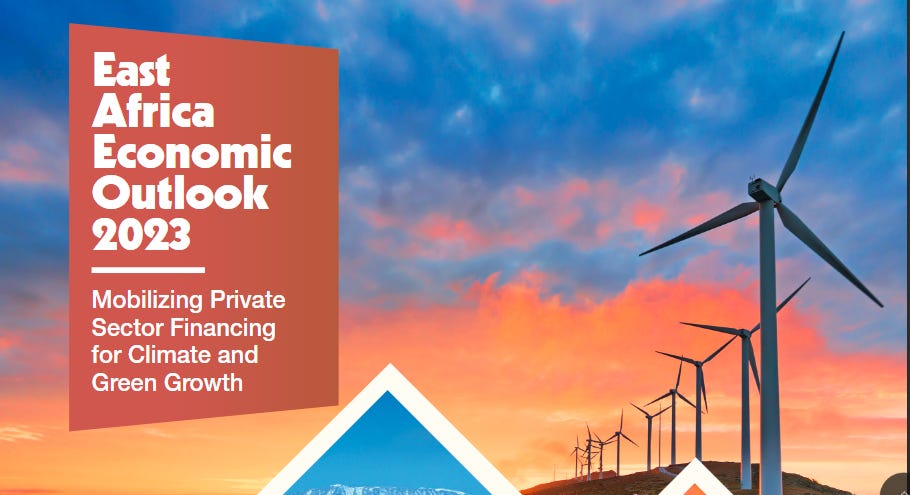East Africa's Economic Outlook Shows Promising Growth, but Risks Remain
Economists Marcellin Ndong Ntah and Edward Sennoga unveil a positive economic forecast for East Africa, but risks persist.
NAIROBI, KENYA — East Africa's economic prospects for the years ahead were revealed recently by economists Marcellin Ndong Ntah and Edward Sennoga, who presented the Regional Economic Outlook report.
The report forecasts a robust economic growth rate of 5.1% in 2023 and 5.8% in 2024 for the region, surpassing other African regions, writes Winston Mwale.
The report highlighted Rwanda as the region's top performer in terms of GDP growth, with Uganda, Ethiopia, Kenya, Tanzania, and Djibouti also contributing to the region's economic progress.
Household consumption was identified as the main driver of economic growth in many countries, while investment was expected to have relatively low efficiency.
In terms of sectors, the service industry was projected to continue leading growth in the short and medium term.
However, the report emphasised the necessity of economic diversification in exports and market access to further enhance growth.
While the economic outlook is positive, the economists warned that the region's performance remains varied and faces several risks. Challenges such as infrastructure gaps, conflicts, and macroeconomic imbalances, including high public debt vulnerability, could hinder growth domestically.
Externally, a potential global economic slowdown, commodity price fluctuations, and geopolitical events, such as Russia's invasion of Ukraine, also pose threats.
To mitigate these risks and sustain the positive growth trajectory, the report recommended implementing counter-cyclical and structural policies.
Suggestions included adopting prudent monetary and fiscal policies, strengthening coordination between fiscal and monetary policies, enhancing economic and financial governance, and creating a favourable policy and regulatory environment.
Additionally, the report stressed the significance of private sector involvement in climate and green growth initiatives.
East Africa's abundant natural resources were identified as opportunities for green growth. However, the report noted that private sector interest in climate action and green growth in the region remains limited.
The economists highlighted the importance of closing the financing gap for climate action and green growth in the region.
They estimated that East Africa will require up to $739.4 billion over the next decade, necessitating national frameworks to attract private financing, the acceleration of blended finance instruments, and partnerships in project development and implementation.
Furthermore, the report underscored the role of natural capital in climate finance and green growth. It identified barriers such as weak resource governance, illicit resource flows, political instability, and deficiencies in natural capital accounting.
The two economists called for strengthening natural resource governance, fulfilling commitments in international conventions, investing in capacities and data for accurate natural capital valuation, and promoting green technologies and innovation.
In conclusion, the East Africa Regional Economic Outlook 2023 provides a positive forecast for the region's economic growth.
However, the report emphasises the need to address risks and harness the potential of climate action, green growth, and natural capital to ensure sustained economic progress.
*Feel free to download both the two-part presentation by the two economists and the Report itself below.




